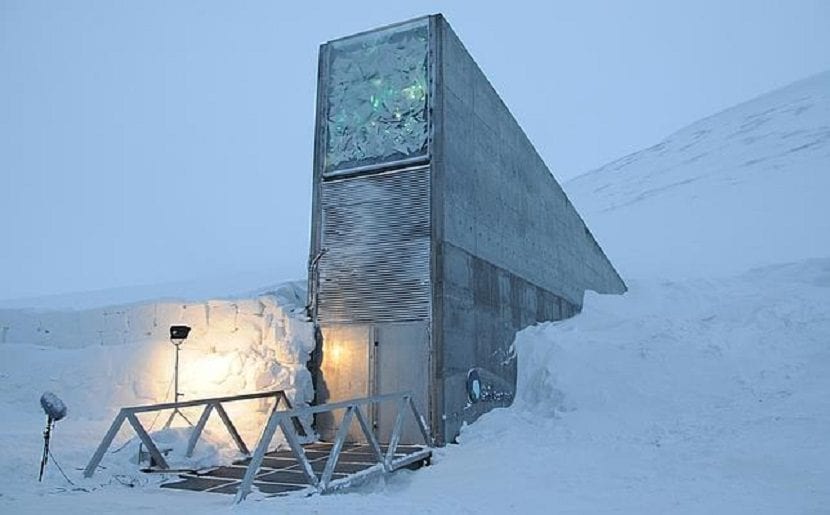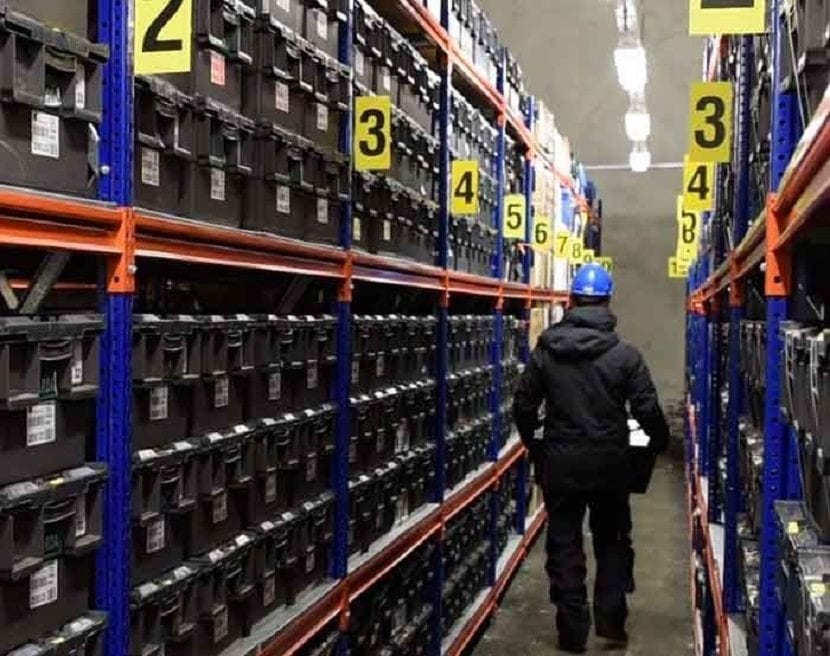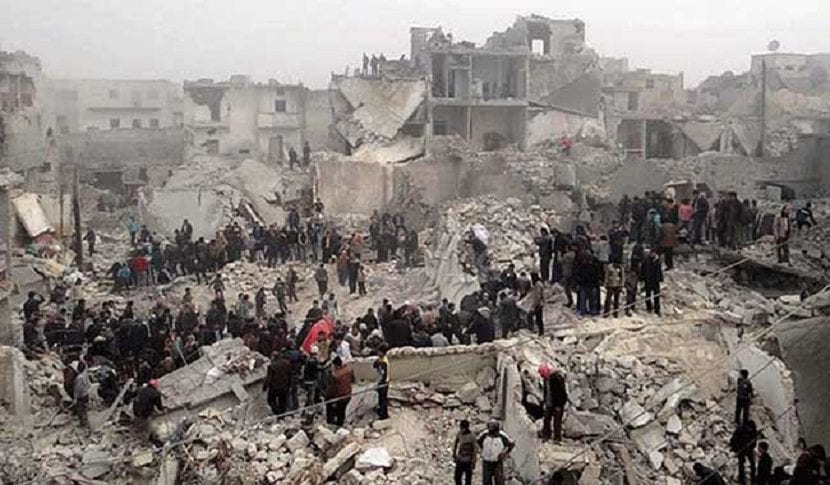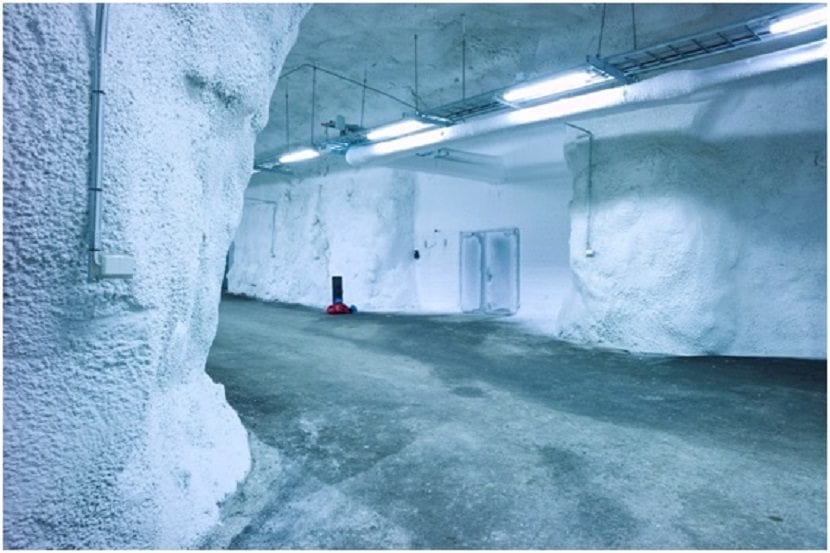
Popularly known as the End of the World Vault and officially called the Svalbard Global Seed Chamber is hidden about 120 meters deep, more specifically located on a mountain in the Norwegian archipelago of Svalbard, in the Arctic.
This chamber is armored and is prepared to withstand nuclear explosions, volcanic eruptions, earthquakes and other disasters, both natural and human.
Why build this Vault?
The End of the World Vault It was built to preserve 860.000 samples of more than 4.000 species of seeds from 231 countries.
With the intention that one day they can be used in the event of a world catastrophe.
It was created in 2.008 and today this gigantic seed bank has received more than 20.000 new varieties of seeds from a hundred countries around the world.
The last participant who has joined this cause (as a country that donates seeds) is the government of Japan, which provided samples of barley.
Participant due to concern for the long-term safety of your crops that arose after the 2.011 earthquake and tsunami.
His creation
The Vault or Chamber, is funded by the Government of Norway and supported by the Global Crop Diversity Trust, which is a group in which several countries and private entities participate, including the Bill and Melinda Gates Foundation.
What is intended with this is serve as a possible cupboard and barn for all mankind in the event that the existing food plantations on the planet were totally destroyed by a catastrophe, whether caused by man such as a nuclear war, or caused naturally such as an earthquake or a “annihilator”. ”Agricultural epidemic.
Its installation, defended by hermetic doors and motion detectors, is divided into 3 warehouses, where they keep the seeds at minus 18 degrees in aluminum boxes.

With this, they are able to guarantee the conservation status of all seeds for centuries, which will remain frozen even in the event of a power outage.
Background
The existence of seed banks is not new, in fact, all countries in the world have their own banks.
A place where seed samples are kept with the anticipation that, due to one phenomenon or another, crops will disappear from certain places and have to be replaced.
They are born like this local seed banks, a fundamental measure of food security.
In this way, they offer scientists and farmers in the region different varieties of plant seeds, so that, in the case of diseases or external problems, local crops are not lost.
Another rationale is for the conservation of genetic varieties.
Svalbard, is actually the center of a worldwide seed bank system, designed to collect and store hundreds of thousands of varieties, thus encompassing almost all the plants that have (ever) been cultivated by humans.
As mentioned above, the End of the World Vault or the Global Chamber of Seeds for all this, It has the largest collection of crop biodiversity on Earth.
Preserving millions and millions of seeds of more than 860.000 varieties.
It is, without a doubt, to give you an idea, as a "backup" that aims to protect humanity from hunger caused by the problems of climate change or by natural or human disasters.

First opening
Yes, the first opening and surely not the last.
The End of the World Vault or "Noah's Ark" of seeds first saw the light of the Sun in 2015.
In that year, the world knew that ICARDA seed bank officials in Aleppo (moved to Beirut as a result of the war) 116.000 samples were requested to be drawn from Svalbard.
No seed has ever had to be removed until that year. due to the Syrian Civil War, which caused such chaos that the people who "guard" the Vault at the End of the World sounded the alarm.
Brian Lainoff, Spokesperson for Crop Trust (one of the Vault's international trustees) said:
"The vault can only be opened in the event of a catastrophic event, such as a flood or drought, that could threaten a crop with extinction."
"We simply do not know what will happen, at any moment they could attack the facilities." Lainoff pointed out about the International Center for Agricultural Research in Arid Zones based in Syria, one of the 11 world seed banks of the Crop Trust.
The reason for the request for the removal of seeds was that they had to restore a collection that had been damaged by the conflict (killing at that time 250.000 people and causing more than 11 million to flee their homes).

Crises, like at that time in the Syrian conflict, are exactly the kind of events that this conservation system is designed to support.
Protecting the world's biodiversity is precisely the purpose of the Svalbard Seed Vault.
Found emotions
However, Svalbard's Responsible Crop Trust workers are of the opinion that it is noteworthy how regrettable it is that the first withdrawal from this Vault is in response to a man-made disaster, rather than some kind of catastrophic weather event.
Fortunately, ICARDA will get back the varieties of crops that it conserved, which may prove to be particularly important in helping the world survive a changing climate that is putting the balance of the environment more and more in danger.
Although on the other hand and unfortunately, it is deeply sad that ICARDA can no longer maintain its operation in Aleppo (the largest city in Syria and one of the oldest inhabited settlements in the world) because it was devastated by the war.
Maintaining the entire history of agriculture, these seed banks preserve the most valuable that has allowed us to survive and prosper as a species.
Syria was the "forge" of the first signs of agriculture in human history, so it is painful that it is precisely there, the place where they had to provide seeds to their local bank.
The End of the World Vault is no longer safe
The last piece of information received from Svalbard is that the Vault suffered water infiltration due to rising temperatures, endangering the treasure it houses between the ice sheets.
The Svalbard Vault was finally hit by the consequences of climate change.
The increase in temperature caused the natural permafrost to thaw, which means that the soil surrounding the Chamber began to thaw, and water began to infiltrate the entrance tunnel.
RFI Hege Aschim, spokesperson for Statsbygg, the company responsible for the building and technical operations in Svalbard in a statement said:
«The tunnel is very long, around 100 meters. In October 2017, we had very high temperatures and a lot of rain in the Svalbard region and we had a major flood "
"It was a Saturday night. A lot of water infiltrated the entrance tunnel, up to 15 or 20 meters inland and since it is very cold inside, the water froze. I must say that the seeds and the seed vault itself were never at risk. But we had blocks of ice at the entrance, and this was obviously not supposed to happen.
As we cannot get machinery in there, we get them out with the help of firefighters and other workers. It was quite dramatic. "
Those responsible for the Global Seed Chamber assure that the seeds (close to 900.000) were not affected, although it was necessary to take measures to solve the problem.
The Statsbygg company removed the electrical equipment at the entrance to reduce heat sources and built waterproof walls inside the tunnel and drainage ditches in the surrounding mountains.

Statsbygg spokesperson RFI Hege Aschim reported:
“We are going to modify the access tunnel and build a new part specifically. It is now made with a metallic material, so it will be a stronger construction.
“We are also going to help the tunnel by modifying the soil that surrounds it. We are going to change about 17.000 cubic meters of land around the construction.
We will help this land to freeze thanks to pipes that cool. And on top of the tunnel, we will put a kind of carpet that cools. All this to help the permafrost stabilize. "
These works are scheduled to begin in the spring of this year, shortly after the tenth anniversary of the creation of the World Seed Bank.
The responsible agencies, including the Norwegian Government, hope that the Svalbard reserve will last forever in this area, the Arctic, among the most affected by global warming.
A final thought
The End of the World Vault has been built to ensure the preservation of the life of human beings on a planet that they themselves are in charge of destroying in the most diverse ways.
It seems paradoxical, but it is the sad reality that on the one hand, we generate pollution, we kill each other, we destroy the Environment and we attack the rest of the beings with our actions, and on the other, we make sure to survive in case of catastrophes.